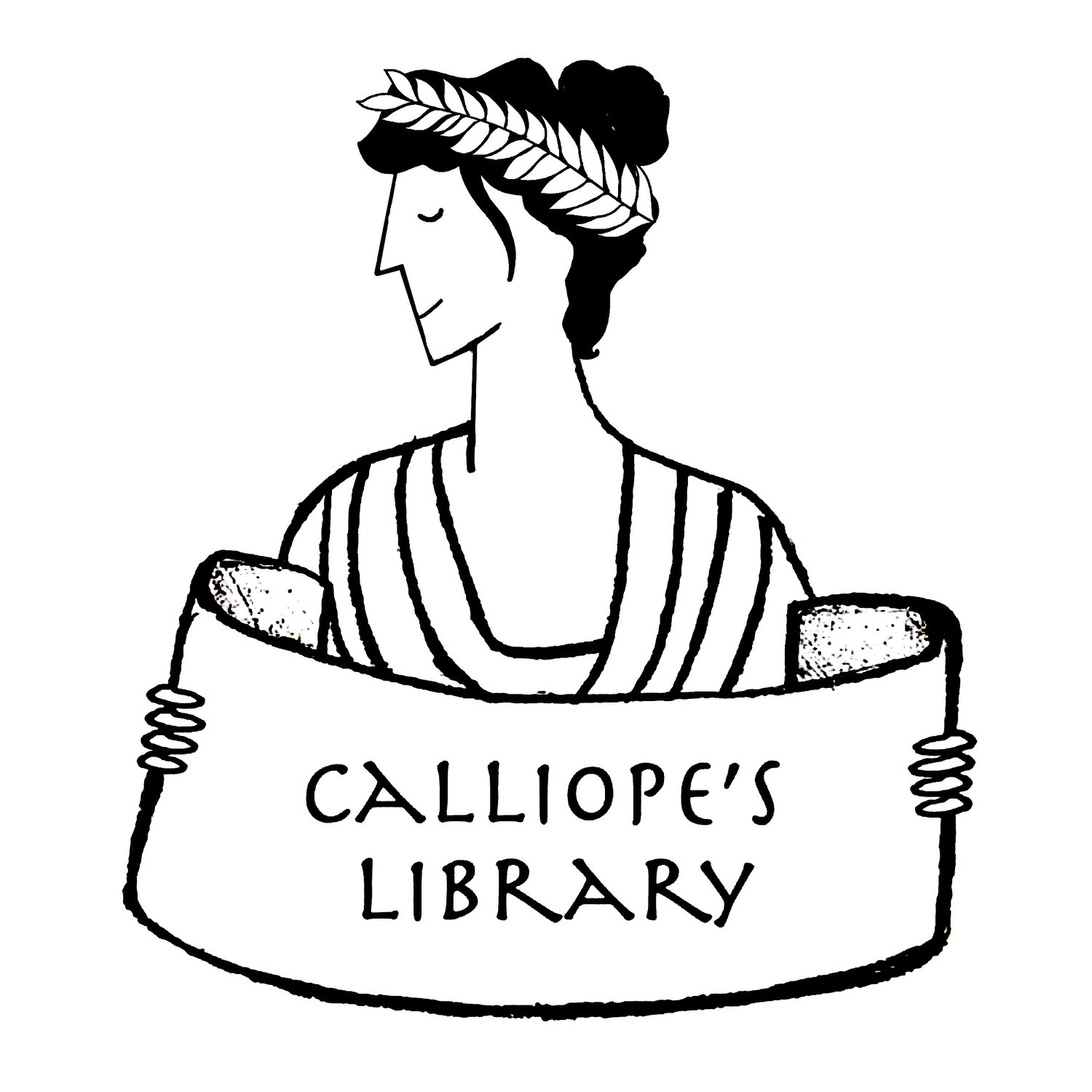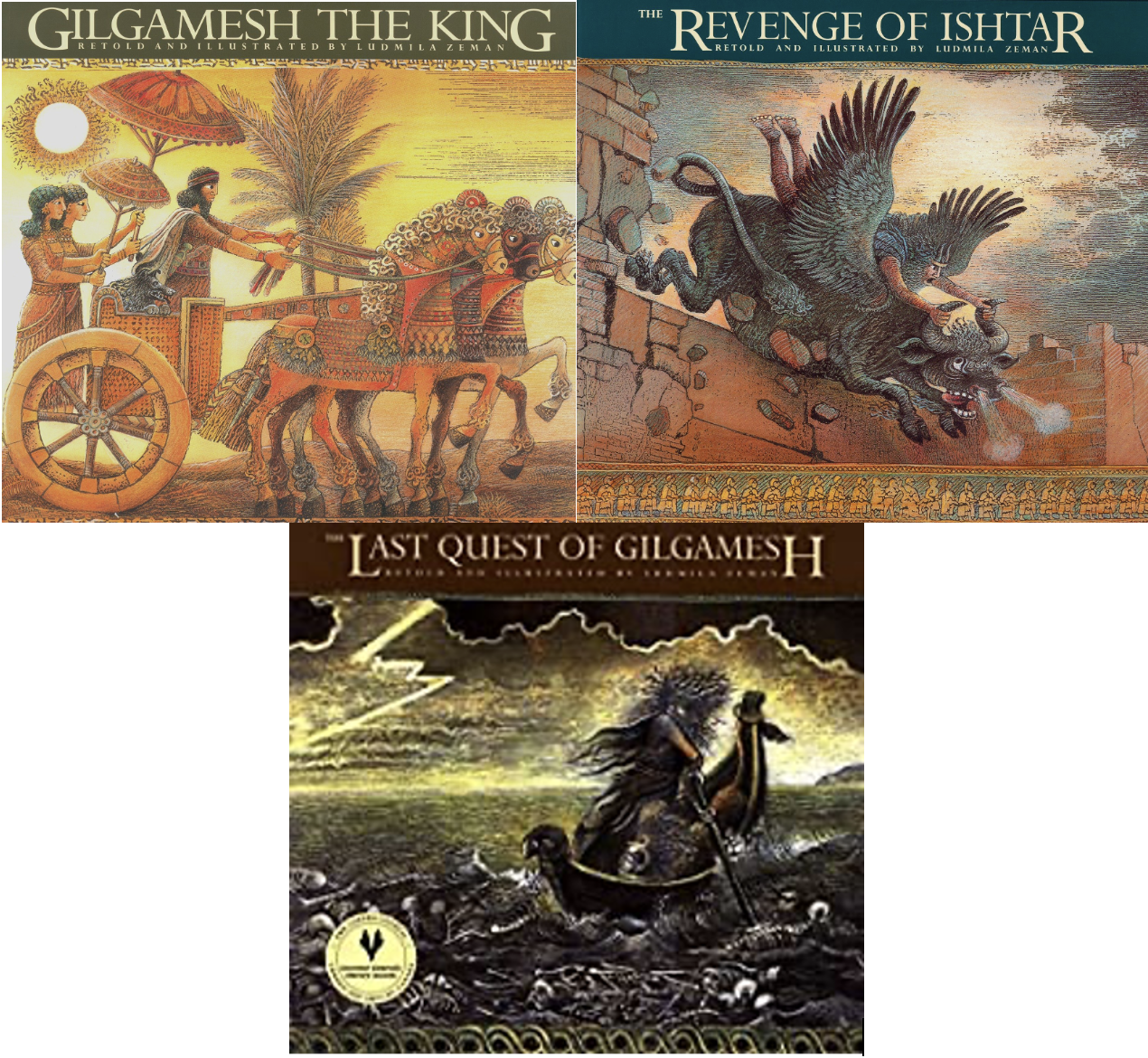Title: Gilgamesh the King; The Revenge of Ishtar; The Last Quest of Gilgamesh
Author and Illustrator: Ludmila Zeman
Date: 1992-1995
Tags: 7+, picture books; ancient near east; mythology; Gilgamesh; Mesopotamia
This trilogy retells the Epic of Gilgamesh, the Akkadian epic poem that sings the tales of Gilgamesh, half-man, half-god, king of Uruk in the second century BC. Vain Gilgamesh, lonely in his power, fears that one day the world may forget him. So that future generations remember him, he orders the building of a great wall (the highest wall in the world!) around Uruk. But the building of the wall devastates the people. Exhausted, they call upon the Sun-God to stop Gilgamesh. As an answer to the desperate prayers of Uruk, the Sun-God sends Enkidu, the wild man, the strongest man in the world, to fight Gilgamesh. The two are matched; they meet on the wall itself in a charged battle (the verbal confrontation for which is in Akkadian—a language whose alphabet looks like little squares and triangles.) In the midst of the attack, Gilgamesh nearly falls off the wall but Enkidu grabs him. Touched by this act of mercy, Gilgamesh has a friend in Enkidu. He is no longer lonely. Now he knows what it means to be human.
The Revenge of Ishtar and the Last Quest of Gilgamesh are every bit as exciting. In the first of them, Gilgamesh experiences the death of two people he loves. The powerful, devastated king seeks to rectify this loss through a quest for immortality. The Last Quest of Gilgamesh sends Gilgamesh to the ends of the earth in the expectation that Utnapishtim can give him what only gods have—everlasting life.
The stories in these picture books are fantastic—they are meaningful and speak deep truths. But the illustrations! The illustrations of these three books dazzle. They are in the style of cuneiform tablets; boarding each illustration is what resembles a Sumerian frieze with motifs from the Pergamon Altar and the Gate of Ishtar. The illustrations give a sense of ancient Near Eastern art, architecture, and dress. -- Sarah Klitenic Wear


